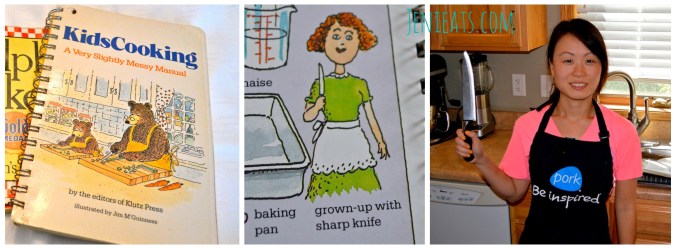I haven’t seen very many episodes of Downton Abbey, but the episodes that I did watch left me curious about life during the Edwardian era. When a topic peaks my curiosity, I obsessively search for information and learn as much as I can. I spent many an hour Googling questions such as, “How accurate is Downton Abbey” and “What was life really like for Edwardian servants.” When I found the little book Life Below Stairs: True Lives of Edwardian Servants at our library, I eagerly checked it out.
This book truly is little. Online reviews critique it for not being very thorough, not going into enough detail, and lacking photos. While I can’t really argue with these criticisms, I found this a quick and interesting read. I knew absolutely nothing about life during the Victorian, Edwardian, and post-Edwardian eras and enjoyed reading an overview of the basics. It’s continued to pique my curiosity on the subject, though. I just requested Margaret Powell’s memoir Below Stairs detailing her experiences as a kitchen maid and cook.
Here are some of the most interesting things I learned from reading Life Below Stairs:
Young women who wanted to enter maid service spent years saving for their first uniforms. A “print dress, a black dress and several white aprons” could cost two years’ wage (p. 61). Sometimes families bought their staff fabric each year for a new uniform, but the servant had to either sew an outfit on their own time or pay someone else from their meager wages (p. 67).
Servants in the Victorian period typically worked 16-hour days, yet received one afternoon off a week to attend church. By the 1900’s, households also gave their servants an afternoon and evening off each month. However, this free time coincided with completing their duties after lunch and having to return by dinner or a nine p.m. curfew. Some people saved up for years to return home for a day. In the early 20th century, it was normal to receive a week-long paid holiday, and two weeks after WWI. Because this rare time-off was so precious, taking it away from employees was a common punishment (p. 85).
Lady’s Maids were like fashion consultants and skilled hair dressers. They prided themselves in their signature recipes for hair washes, pomades, boot polish, and face cream. Valets offered their signature boot polishes (p. 30).
The Butler got the least amount of sleep. He held the highest position on the Edwardian servant tree, ranking above the female housekeeper. Sure, he got paid a higher salary than the other staff and a more generous beer allowance. He got to sample the family’s food and received occasional tips (p. 31), but had the worst schedule. The book outlines the schedule of a real man who served as a butler in 1893: His day started before 7: a.m. and he literally had to make himself available until his master decided to go to bed. Dinner started at seven p.m. followed by evening tea at 9:30 p.m. He locked up the house and put out the fire at 1 a.m.
Laundry was a seven-day process, beginning with soaking the clothes on Monday, scrubbing them on Tuesday, hanging them on Wednesday, starching and ironing on Thursday and Friday, and folding on Saturday (p. 100-101).
Dinner parties consisted of up to ten courses and occurred once-twice per week (p. 112). The really wealthy households offered guests three choices for some of the courses and wine pairings.
Land Stewards lived in their own houses on the property and often had families (p. 26). For many female servants, though, marriage was the only social acceptable exit.
More affluent households employed two different types of cooks: A Professed Cook who prepared fine dining meals and Plain Cooks who prepared day-to-day meals and those for staff (p. 36).
Fancy dinner parties were a big ordeal. Often times, the staff was instructed to prepare so much food that leftovers still got thrown away, even when given to the staff (p. 112). It was the role of the footman to greet guests at dinner parties. He would announce each guest’s arrival to the host and hostess who waited in a separate drawing room (p. 117).
In the early 1900’s, a woman named Rosa Lewis rose from a servant to a successful caterer and hotel owner with the help of her cooking skills (p. 127). The book lists a recipe for her Quail and Beef Pudding. All you need is 12 quail breasts, “game sauce” and some beef suet pastry.
I’ve recently set a goal to read more and spend less time online. So far, I’ve accomplished the “read more” part. It seems like many of you share my enthusiasm for food-related literature. I love talking books. This might make me seem like a dinosaur, but I still haven’t taken the e-reader plunge. I like holding paper books and flipping through them, even though they’re a pain to move. It’s not that I don’t want to purchase books, but the truth is that I read so quickly that we don’t have the budget or the space to purchase everything I read.
Do you have any recommendations for books that might thrill a Downton Abbey enthusiast? How do you feel about e-readers?













